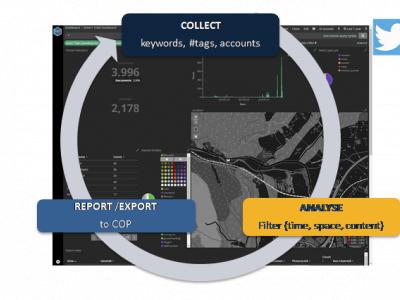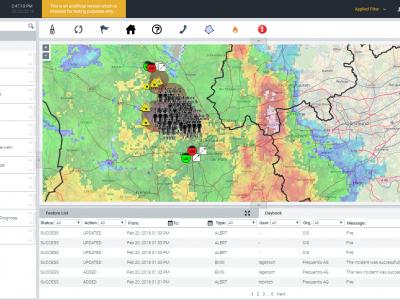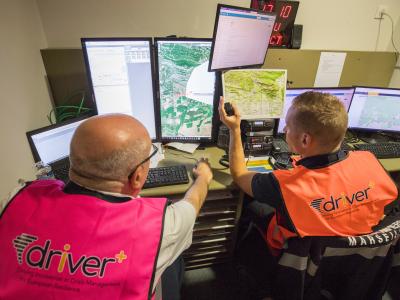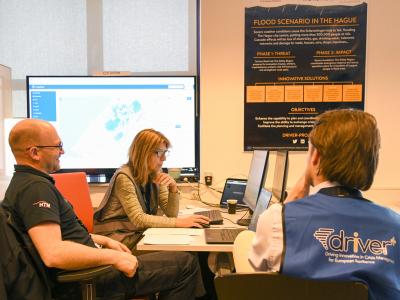Contact
The 2 general purpose is to improve cooperation and coordination between different organizations and agencies from different countries, using innovative solutions for large scale and complex (multi-event) . In particular, the French seeks:
- To identify gaps and describe the associated processes, resulting in a baseline providing the current standard.
- To select solutions addressing the Crisis Management functions that are part of the above mentioned processes and assess to which extend they contribute in improving them and eventually solving the identified gaps and to provide feedback to the solution providers so to improve their solutions and maximise the benefit of using them.
- To apply the Trial Guidance Methodology’s current status, including first lessons learnt after the completion of Trial 1, and provide feedback for further improvement.
- In applying this TGM, to ensure that the Trial set up is feasible and realistic, and will enable the production and collection of data enabling of the three dimensions (solutions, Trial, crisis management).
- To contribute to the development of DRIVER+ .
- To showcase and discuss DRIVER+ methodology, and initial results with external stakeholders taking part in the Trial as participants or as observers.
Gaps
Shortcomings in the ability to exchange crisis-related information among agencies and organizations
A that supports the exchange of -related information among all organizations involved in .
combining the flood maps with information (maps) in LCMS). Assessing the effect of the flood on
traffic management (for formulation of possible evacuation strategies).
Common understanding of the information exchanged in response operations
Different organisations and countries that are not collaborating in daily business may have to work together in large during which a common understanding of the situation and access to the latest information is crucial. The barriers between units come from different natural languages but mainly from different and taxonomy. There is ongoing work towards symbology harmonisation (INDIGO) but they are not implemented widely. Priority areas where common is needed have to be identified and a standard terminology needs to be agreed in such areas. Tools and mechanisms to support the dissemination and implementation of common terminology are necessary, as well as exercises to support the harmonisation of terminology or the mutual understanding of different terminologies.
References in the literature: this is well recognised and detailed in the literature
International cooperation in aerial firefighting
Means are limited to fight large forest fires and new areas are getting more and more affected because of climate change (i.e. example of Sweden). Such areas are less experienced in responding to such (less mature procedures, available material for suppression operations). Support from other countries is therefore key either through bilateral support or through the EU Civil Protection Mechanism, coordination by ERCC. Currently, the EU budget only finances a share of transport costs, but not the operational costs. In the future co-financing is planned to go up to 75% of operational costs.
To address the remaining capacity notably because forest fires usually ignite and develop around the same period across large zones (i.e. Mediterranean environment), the European Commission (RescEU) plans to acquire its own fire-fighting aircraft with the operational control retained by the European Commission, that will be activated when European Civil Protection Pool is insufficient or overwhelmed.
Coordination in dealing with large numbers of severely burned casualties
To our best knowledge, this was never encountered so far in the case of large forest fires with a large number id severely burnt casualties exceeding the capacity from one region or country. But there is a lack of preparation shall this case happen.
Locating casualties in large forest fires
Large such as forest fires may touch a large territory, increasing the difficulty to locate casualties. Real time Location of potential casualties is particularly important for fast kinetics hazards such as forest fires. Most often, forest fires happen in low density area (inhabitants, traffic), but also affect wildland-urban interface. Typical technologies for location of casualties like thermal imaging or canine search may not be used in the case of forest fires. Cell-phone based technology seems to be most useful (either using specific apps or signals from cell-phones) in this context, but are not functioning if there is no cellular coverage.
References in the literature: The ability to locate casualties on a crisis scene is recognised and documented, but not in the specific case of forest fires.
Providing medical assistance to casualties
There are different doctrines and different organisations of the Emergency Medical Services across countries in terms of responsibilities (firefighting and EMS are provided by the same organisation in some countries, by different organisations in others) and accessibility of the scene ("red zone").
The fast kinetics of forest fires with situations evolving rapidly may put medical services at while severely burnt casualties require urgent medical aid.
References in the literature: the literature provides elements in terms of geolocation of first responders on a crisis scene, but nothing specifically for forest fires.
Overarching objective of this is to improve the to a large forest fire through improved communication, information exchange and shared situation awareness across organisational and administrative borders as well as along the chain of command.
Objectives
Trial objective 1
Develop shared situation awareness about the current situation and the crisis dynamic, so that all involved practitioners can bring their expertise as soon as possible.
Trial objective 2
Develop shared situation awareness about the to coordinate operations, so that one ’s operations do not disturb another ’s activities.
Trial objective 3
Improve communication between onsite and offsite command teams to manage the reinforcement requests properly.
Trial objective 4
Improve communication across organisations from different countries (therefore with different doctrines), so that the deployment of support teams on the operation site can be as smooth and efficient as possible.
Trial objective 5
Ensure the safety of the responders (and in particular if others than firefighters are operating in close or direct contact with the fire area).
Trial objective 6
Improve decision-making regarding specifically 1) tasking of reinforcement teams; 2) routing of means (ambulances).
The of 2 simulates the to a large forest fire in a typical Mediterranean environment (South-East of France, Bouches-du-Rhône department, Alpilles area). The severit of the fire requires cross-border coordination and information exchange across organisational and state borders as well as along the command chain.
Scenarios
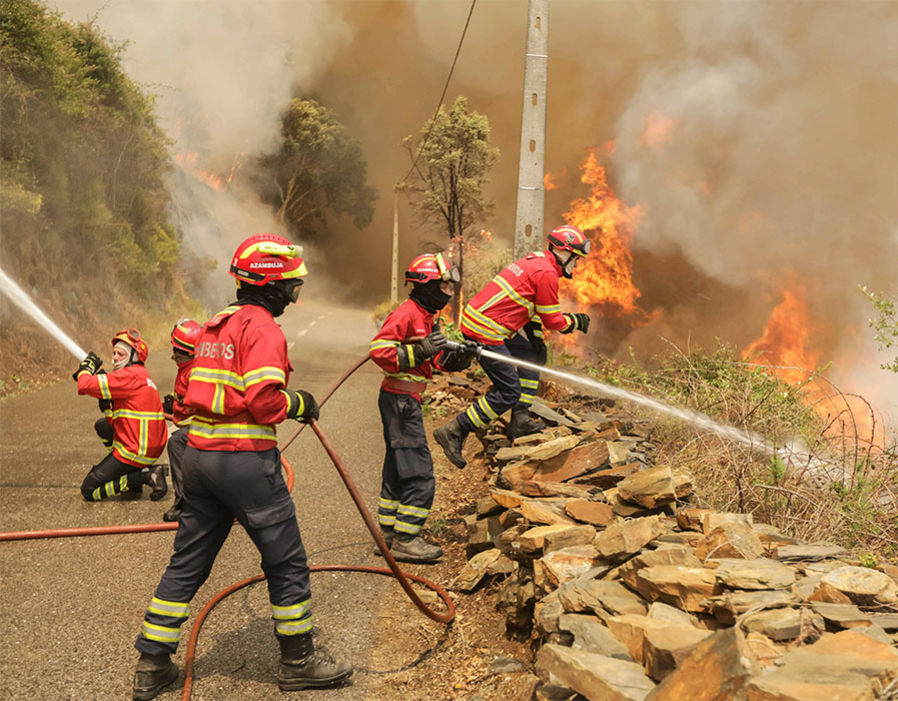
 |
Portfolio of Solutions web site has been initially developed in the scope of DRIVER+ project. Today, the service is managed by AIT Austrian Institute of Technology GmbH., for the benefit of the European Management. PoS is endorsed and supported by the Disaster Competence Network Austria (DCNA) as well as by the STAMINA and TeamAware H2020 projects. |
